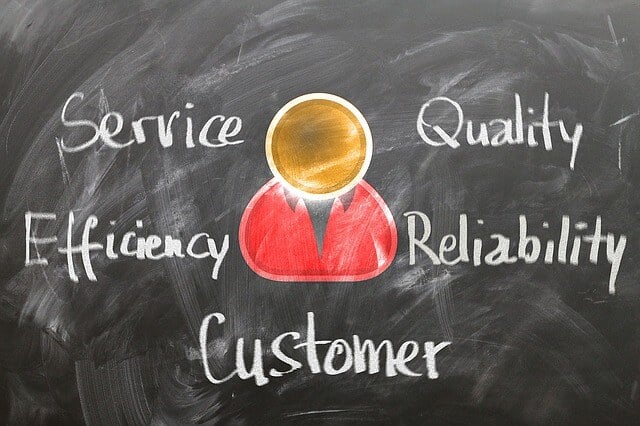Ways Poor Customer Service Can be Costing Your Fleet Operation

By Mary Gerard, Content Marketing Manager
When you’re dealing with the day-to-day needs at your fleet operation, your priority is likely keeping your vehicles and assets on the road, and your staff safe.
Providing good customer service might fall down the list. While that’s not ideal, it’s understandable. You have a lot on your plate.
But poor customer service can actually be costing your operation.
Let’s look at a real-life scenario you’ve likely experienced.
How many times have you pulled away from the drive-thru window to find out your order is wrong. Or, even worse, you ordered food for delivery and you’re missing items?
What do you do? If you’re still at the restaurant, you might pull back through the drive-thru and request the order to be fixed. Or you might drive away, not wanting to go through the inconvenience of waiting for it to be fixed.
If your delivery order is wrong, your options are more limited. Does this sound familiar? You call the restaurant; they sort of apologize and offer you a credit for the item that was missed. Well, great, but did they solve your problem? No. You still don’t have dinner.
These situations are going to leave a bad taste in your mouth, and if they aren’t handled by the restaurant correctly, you might not return.
So, back to your fleet operation. How does your team handle issues with customers – both internal and external? If you’re mishandling the situations, it could be costly.
Customers Remember the Bad
When you think about customer service, do you immediately think of a positive or negative experience? Unfortunately, most people tend to think of the bad first. We are actually hard-wired to focus on the bad. According to the Association for Psychological Science, negative stimuli have a larger impact on the brain than positive ones.
And, even worse, customers are more likely to share negative experiences. Whether they are going on a public forum to share a bad review, or just using word-of-mouth to internal customers, bad news can spread faster than good.
Customers Don’t Want to Waste Time
How fast is your customer response time? If someone calls to check on a delivery or garbage pickup, or an internal client wants to check on a vehicle’s availability, how quickly do you return their call? No one likes to wait around. Waiting to be helped, get a call back or an email response is a waste of their time.
According to SuperOffice.com, 62 percent of companies do not respond to customer emails. For those that do respond, the average response time is 12 hours. That’s half a day of waiting around to get an answer to a question!
It’s essential to react promptly to customer requests. Even if the work will take a while, it’s important to at least communicate the expectations with them and keep them in the loop. If a client feels like they’re wasting too much time working with your operation, they might take their business elsewhere – even if it’s an internal customer.
Customers Have Options
Unfortunately, while we like to think our fleet operation is the best and we’re far and above our competitors, there are a lot of options out there for customers. And, if they have a bad experience working with your team – whether they were left on hold for too long, or didn’t get a delivery, or had another issue – they will find another company who can provide the same services. And if they take their business elsewhere, then they might tell their peers, as well. It can end up costing you several customers.
How Can You Fix Customer Service Issues?
Fortunately, there are ways to overcome these obstacles.
One of the most important things you can do is communicate with your customers. Find out what they think of your services. Send out a Net Promoter Score survey quarterly to get their feedback. Or provide a survey after each service. You won’t know what they think of your services unless you ask!
Then, when you find out the results, look at the detractors, or those with the most negative feedback. Ask them what your company can do to win them back and turn the relationship around. This will give you goals to focus on with your team.
Internally, you also need to make customer service a priority. Have customers provide feedback after interactions with your staff and rate the experience. Celebrate the good scores and train those with poor scores to help them improve. Making it a company priority can greatly improve your customer service experience for your clients.
At RTA, our Support team has nearly a 5-star rating from our customers. We take pride in it, and it’s one of the things that sets us apart from our competitors. To learn more about our Support team and our fleet management software, schedule a demo today!
